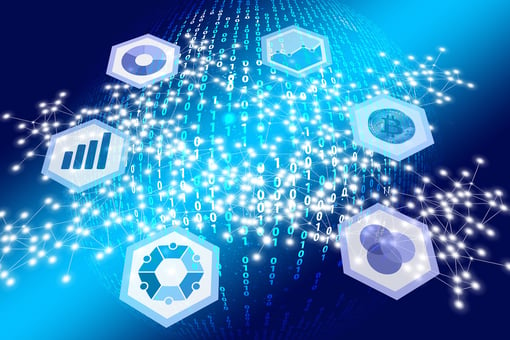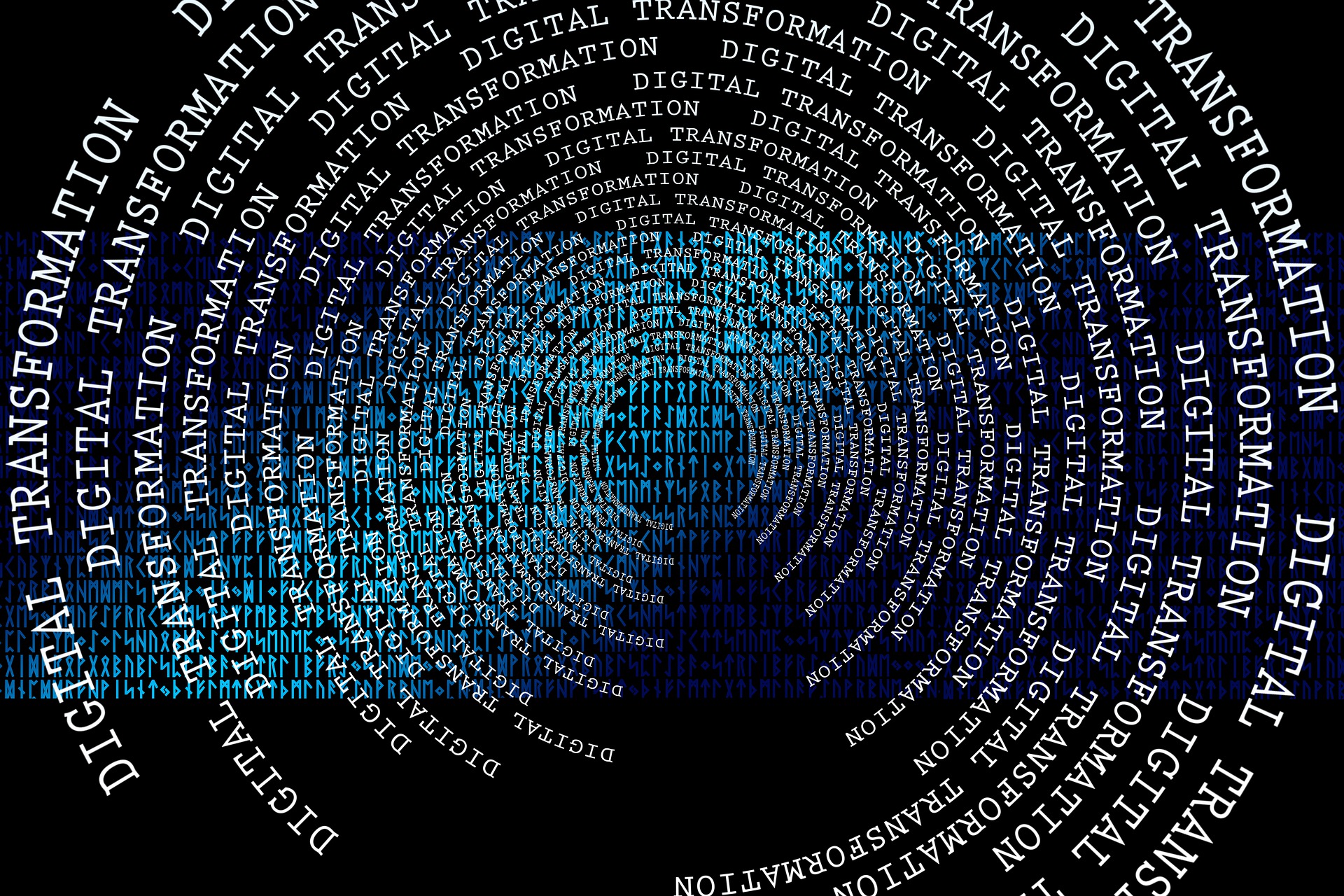In 2019, the IoT market reached USD 250.72 billion and by 2027, it is estimated to cross USD 1463 billion. Yet, 84% of decision-makers in North America said that they did not use enterprise resource planning (ERP) with IoT data in their organization.
IoT is a brilliant network that can help companies maintain their equipment as well as deploy field technicians. This means businesses have the potential to reap rich insights from the torrent of real-time data and machine-and-human interactions in their environments.
For example, retailers could use IoT to optimize inventory and streamline customer delivery logistics; and smart city planners could use these massive networks of devices to manage traffic by optimizing the flow of traffic lights efficiently.
So, if you are not using it as part of your systems, you are really taking a chance with your business’ potential to scale and grow.

Why IoT is important?
The Internet of Things helps you to create new and groundbreaking products as well as offers new solutions for existing challenges. With the technology, you can acquire data from all sorts of IoT-connected devices, analyze it, and then deliver value to your customers.
All you need to do is to know how to use this data effectively.
The IoT is enabling companies to gather more and more data on their product performance, customer behavior, and assets. And unlike the past, obtaining this kind of information is not very expensive today.
Even processing this data is not an issue anymore. In fact, IoT can receive and process larger volumes of data than humans. That’s one of the biggest benefits of this technology.
This means the entire process can be automated and orchestrated at a scale larger than an entire human workforce ever can.
How do you define a digital transformation?
A digital transformation is a term that has been thrown around a lot in the past few years. The easiest way to define it is the effect that innovation can have both on business and technology using internet technologies.
While a traditional business focuses on things like resources, products, services, and customers, in a digital enterprise context, things like sensing systems, smart data processing systems, and cloud-based applications are more important to accomplish business goals.
In essence, digital transformation refers to the concept of leveraging technologies, like infrastructure, mobility, connected devices, and cloud computing, among more - to improve business value.
How IoT can speed up your company’s digital journey
The IoT is a major contributor to the digitization phenomenon that has connected people and objects in different industries.
Due to its unique ability to generate massive amounts of data, IoT can be used for improving business operations, transforming customer satisfaction, and enhancing employee productivity among other things.
Digital transformation leverages the IoT data for faster decision-making so that companies can stay ahead of the curve. The key lies in deriving maximum value from IoT data, to innovate and compete.
In fact, IoT sensors are the enabler for digital transformation. These devices have become an integral part of the business landscape.
They help send, receive and study data from a variety of sources, ranging from supply chains, smart buildings, security cameras, and practically every other system in order to make optimum business decisions.
The sensors also allow you to inform decisions about production, logistics, and various business processes that can result in an improved ROI.
More specifically, here is how businesses can use IoT to accelerate their digital journey.
Preventative maintenance with IoT
When you think about IoT, your first thoughts may be about smartwatches and fridges that connect to your phone. But the real value of IoT lies in using it as a preventative maintenance tool to prevent breakdowns and loss of productivity.
It can reduce your operational costs by enabling assets to work longer and more efficiently before wear-and-tear runs its course.
For instance, you can use IoT data to improve the performance of your machines by detecting functional problems early on, so you don’t have to lose your business hours to repairs.
Increased uptime
Sometimes, it’s not enough just to collect data. You first need to be sure that you are choosing the right metrics to collect and automate your operations.
There are many ways to use IoT data in order to work towards a digital transformation. One of them is reducing downtime by automating business processes using IoT devices.
With increased uptime, you can improve asset visibility using integrated systems, monitor the health of your assets to ensure continuous efficiency, and elevate your organization’s performance while minimizing costs.
Equipment Tracking
Innovation in the IoT field has resulted in billions of connected devices and extensive data logging capabilities.
This means that organizations can process huge amounts of data from connected equipment, including things like sensor tags, moving vehicles, and computer terminals. This data can be analyzed to provide insights into areas of profitability that were unclear before.
A simple example of increasing profitability with equipment tracking is knowing where your vehicles are at all times to detect problems before incurring huge losses in repair work.
Management of deployed equipment
Wouldn’t it be great if you could stop the deployment of field equipment at different sites and then be able to communicate with the deployed equipment?
In most of today’s businesses, equipment is deployed out in the field and operated by employees that are not sitting in the office.
IoT also allows you to collect large volumes of data from deployed equipment and efficiently manage them. It provides you with a channel that promotes effective communication between the embedded devices and the cloud even when they are offline.
Reporting and compliance
With an increasing interest in IoT, there has also been a rise in the importance of reporting and compliance, especially when it comes to data security.
You can configure your IoT network to place higher importance on connecting assets in a secure way so that the data can be kept safe from unauthorized access, malicious use, and tampering while complying with your industry’s regulations.
Cost-saving and efficiency
Digital transformation comes with an intrinsic pressure to innovate and speed up time-to-market by deploying faster and getting better results.
So, IoT is not just for big companies any longer. A lot of small and midsize organizations can make use of low-cost IoT sensors to gain a competitive advantage, from just-in-time inventory management to predictive maintenance.
You can even respond to a much more complex environment, running on high technical performance expectations, while maintaining cost-effective services and reducing technological failures.
IoT after COVID-19
IoT has been a big player in the post-pandemic era. Not only are networked assets such as smartphones, wearable devices, or city sensors generating and sharing large volumes of data but also the use of innovative data analytics is helping organizations make meaningful decisions.
Undoubtedly, it is going to be the backbone of all future enterprises and businesses. With an economic downturn facing our generation, businesses can’t help but move all their operations remotely.
And given the infrastructure, which wasn’t prepared for a pandemic, connectivity has been a major challenge since the inception of the newly developed work-from-home culture.
If IoT is to be successful, it ought to address three key challenges: the network, the physical infrastructure, and the security. Because IoT is the only way to be connected with your team and its operations as you would in an office environment.
But the problem today is that as employees work remotely, they are no longer around those important assets that define and drive your company’s growth.
Your assets are exposed to cyber attacks, theft, and physical damage at all times now that they have transcended your radar.
This means not having any control over either physical records that harbor customer data or over those stored on a private computer.
IoT can address these challenges with a single cloud-based solution, allowing you to rely on a flexible infrastructure capable of growth.
You can deploy thousands of equipment and technicians to multiple locations across the world using a single reliable network, which facilitates seamless communication with assets and remote systems.
Investing in this single network can help you manage high volumes of traffic and ensure that your data is transmitted securely from one point of contact to another.
You can also base your company’s ability to grow on this particular network without worrying about paying more due to its ability to let you build as you grow.
Opportunities for IoT in smart inspection
When most people think of IoT, they think of sensors deployed to perform actions in and around a home or business. Smart light bulbs, speakers, thermostats, and appliances that you can control with your smartphone are all examples of IoT-connected devices.
But considering how much data these types of IoT products can collect and transmit, there are other industries that can benefit from this kind of technology, too.
We tapped into the barely charted territory of building equipment and fire safety to reduce the risk of fire accidents. We developed smart inspection software for Kirk Roth Project to help them create meaningful value in their clients’ lives.
How we empowered this company’s fire safety management mission
Kirk Roth Project is South Africa’s preferred fire safety provider. The company specializes in supplying spare parts, installing systems, and maintaining fire-compliant buildings.
Since traditional asset inspection could only pick up on faults during routine checkups, there seemed a need for a system that could monitor assets between those scheduled inspections.
Our team, at AssetPool, supported KRP’s mission of offering round-the-clock service by developing a smart inspection system that has allowed them to protect lives and limit damage to property.
AssetPool’s software accelerated KRP’s digital transformation by providing end-to-end IoT data and visibility into their clients’ assets - from the field to the analytics center.
This has enabled the KRP team to make intelligent decisions, which have resulted in increased asset safety and optimized operations.
The KRP team is now able to stay on their toes and in the loop of any changes that happen in the performance of their clients’ assets and equipment.
Our software is designed to trigger a response from the KRP team every time there is a threat to any asset, which helps them quickly dispatch field technicians for further inspection and repair work.
From asset onboarding to tracking, the system is equipped to record every development and remotely inspect every part of the objects.
With AssetPool’s software, KRP is always aware of their assets’ performances, allowing them to detect faults proactively and prevent them from becoming a major problem.
Our system also complies with the fire and safety regulations of South Africa and can, therefore, be configured in a way to facilitate communication the moment KRP’s assets fail to comply.
And because the system integrates cloud computing, it enables KRP to be accessible 24/7, no matter where their team is operating from.
Bridging the gap between IoT and smart inspection software
We know that IoT is poised to affect every business industry on the planet. But how do you get started with your IoT digital journey?
That’s a challenge that AssetPool has been working tirelessly to solve for countless businesses across the globe.
By merging simple hardware management and maintenance solutions in our software, AssetPool is able to ensure that your assets are managed efficiently with near-zero downtime.
Using IoT technology, we help you streamline remote communication on an integrated cloud-based system in the field of deployment and intelligence.
With AssetPool, you can now analyze and visualize large amounts of real-time data collected by your field-deployed assets and equipment to control and optimize them, helping you save a ton of time, money, and effort.
Digital transformation using an IoT network is all about unlocking opportunities for scaling your business. Get in touch with the AssetPool team to learn how you can gain real-time insight into your business performance and the operational status of your assets today.

